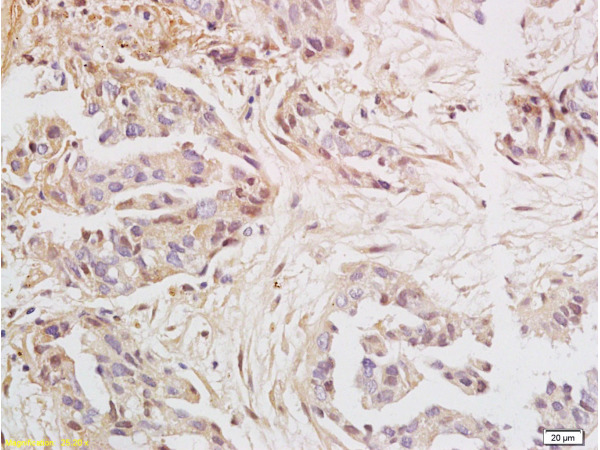
WB analysis of human heart lysate using GTX88326 HMGA2 antibody, Internal. Dilution : 1microg/ml Loading : 35microg protein in RIPA buffer
HMGA2 antibody, Internal
GTX88326
ApplicationsWestern Blot
Product group Antibodies
TargetHMGA2
Overview
- SupplierGeneTex
- Product NameHMGA2 antibody, Internal
- Delivery Days Customer7
- Application Supplier NoteWB: 1-3microg/ml. *Optimal dilutions/concentrations should be determined by the researcher.Not tested in other applications.
- ApplicationsWestern Blot
- CertificationResearch Use Only
- ClonalityPolyclonal
- Concentration0.50 mg/ml
- ConjugateUnconjugated
- Gene ID8091
- Target nameHMGA2
- Target descriptionhigh mobility group AT-hook 2
- Target synonymsBABL, HMGI-C, HMGIC, LIPO, SRS5, STQTL9, high mobility group protein HMGI-C, HMGA2/KRT121P fusion
- HostGoat
- IsotypeIgG
- Protein IDP52926
- Protein NameHigh mobility group protein HMGI-C
- Scientific DescriptionThis gene encodes a protein that belongs to the non-histone chromosomal high mobility group (HMG) protein family. HMG proteins function as architectural factors and are essential components of the enhancesome. This protein contains structural DNA-binding domains and may act as a transcriptional regulating factor. Identification of the deletion, amplification, and rearrangement of this gene that are associated with myxoid liposarcoma suggests a role in adipogenesis and mesenchymal differentiation. A gene knock out study of the mouse counterpart demonstrated that this gene is involved in diet-induced obesity. Alternate transcriptional splice variants, encoding different isoforms, have been characterized. [provided by RefSeq, Jul 2008]
- Storage Instruction-20°C or -80°C,2°C to 8°C
- UNSPSC12352203





